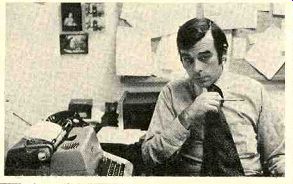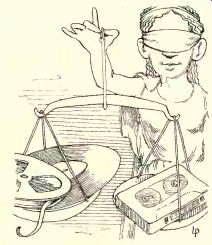
by RALPH HODGES
THE NEW LONDON CASSETTES
LONDON RECORDS was one of the conspicuous casualties when Ampex Corporation brought a virtual end to its production of pre recorded cassettes. Prior to then, all of Lon don's cassette offerings in the U.S. had been manufactured and distributed by Ampex.
Given the technical quality typically achieved in those tapes, many would argue that the real casualty occurred when London first entrust ed Ampex with its distinguished catalog. In any case, Ampex's retreat from this market created a vacuum where before there had been mere chaos, and people began to wonder when or if there would ever be any more Lon don cassettes.
Early this year those doubts were put to rest when a team of engineers and coordinators from Decca, London's parent company in England, arrived in New York with the first production samples of Decca-produced Lon don cassettes. They also arrived with high-
quality 15-ips open-reel dubs of the original master tapes, and they challenged members of the press to see if they could hear the difference between them and the cassettes. I at tended the first day of the Decca demonstration, and I must confess that, except in a single instance, I could not; nor did anyone else in the room seem to be scoring much better.
Although the demonstration convincingly showed that the cassettes and the "master" open-reel tapes used could easily be mistaken for one another, there was one aspect to it that gave me pause: open-reel and cassette had indeed sounded practically equivalent, but neither had sounded overwhelmingly good. I therefore looked forward to a re match, and when I learned some time later that Decca/London had high hopes for the cassettes as out-and-out replacements for discs, it seemed that good grounds for a new contest had been established. After a quick shuffle through our available recordings at STEREO REVIEW we managed to match four of the new cassette releases with their corresponding London disc versions. They were: Gershwin's Porgy and Bess (Lorin Maazel with the Cleveland Orchestra); the Chopin Etudes Opp. 10 and 25 (Vladimir Ashkenazy);
Ravel's Daphnis and Chloe (Maazel with the Cleveland again); and Puccini's Turandot (Sutherland, Caballe, Pavarotti, Ghiaurov, Krause, Pears, and Mehta with the London Philharmonic).
The cassette deck I used was a brand-new Advent 201, carefully adjusted for precise Dolby tracking and playback response and hand-delivered by Advent expressly for this comparison. The disc-playback system was similar to one that had distinguished itself in our "Hot Platter" record evaluations that appeared in the April 1976 issue. To permit instantaneous switching between the two pro gram sources, levels were matched-as closely as is possible with program material, which is probably not very close-by ear and by oscilloscope. As a matter of interest, this level matching had to be readjusted frequently during the comparisons, for reasons that will be explained a little later on. My reactions, case by case, were as follows:
1. Porgy and Bess: In this instance, the cassette version was one of the most disappointing of the lot. At first the sound seemed oppressively dull and lacking in high frequencies, but, astonishingly, it improved after subsequent playings until it was acceptable to listen to by itself, although still not quite the equal of the disc in direct comparison. The improvement I'd attribute either to a change in azimuth alignment as the tape pack within the cassette adjusted itself to the machine (I might note that during the Decca demonstration an engineer realigned the cassette machine for each and every cassette side played-a procedure not practical or appropriate for my comparisons) or to some kind of wearing-in process (better tape-to-head con tact?) taking place in the cassette tape or the machine itself. But, even at its best, the cassette often lacked clarity, immediacy, and "liveness" in comparison with the disc. Most of this I'd blame on small differences in the frequency response of the two recordings, but other factors certainly played a part too, as we shall see.

2. Chopin Etudes: This promised to be a fascinating comparison, because I've found that well-made prerecorded cassettes of piano music can often beat disc recordings hands down, and in a surprising area of performance: wow and flutter. Any serious lack of speed stability on piano music is audible as a wavering of pitch or a thickening and blurring of the instrument's tonal quality. In this area, you might expect a good turntable, with its excellent wow and flutter specifications, to outperform a typical cassette deck easily, but this does not take into account possible pho no-cartridge/tone-arm resonances. My tone arm and cartridge were not as well matched in respect to damping as I would have liked, which resulted in some flutter-like effects.
Plus, a slightly off-center record contributed to WOW.
Overall, the cassette sounded slightly "brighter" .(more abundant in higher frequencies) than the disc in this comparison, al though this may have been due in part to the flutter's blurring effect. And for the most part it had more clarity, although on extremely loud notes and chords (reading 0 dB and above on the Advent's meter) the disc generally prevailed. On the debit side, the cassette was not able to provide the deep, rolling bass of the disc in busy left-hand passages undoubtedly because of the low-frequency equalization used in recording the cassettes.
3. Daphnis and Chloe: Here again the cassette version sounded a bit brighter than the disc, except at the loudest moments. Daphnis and Chloe was the one cassette I was able to distinguish from the open-reel recording at the Decca demonstration, and only because the cassette's susceptibility to high-frequency tape saturation caused a moderate dulling of vigorous cymbal crashes and similar sounds.
The same phenomenon cropped up in this comparison, and in addition I felt I noted some reduction in dynamic range, as if a little tasteful gain-riding had been used in preparing the cassette. But otherwise, except for the omnipresent hiss, the cassette was a highly satisfactory alternative to the disc, particularly since the latter was not devoid of various surface defects.
4. Turandot: For me, this was the comparison that showed up all the cassette's strong and weak points. First of all, the disc was slightly brighter than the cassette, but in this case that meant too bright. The cassette sounded exactly right in tonal balance except, again, when the going got very rough. The raging percussion of Act I proved to be the severest test, and the cassette fell down (as it did in Porgy) in reproducing the power of the bass drum and the flash-powder violence of the big cymbal crashes. At those moments the cassette seemed distinctly inferior to the disc in terms of frequency response and dynamic range; elsewhere I once more got the impression that careful gain-riding had been employed in the cassette version. But, to give the cassette its due, I never detected any evidence of peak limiting or other more insidious forms of dynamic-range compression (in com parison with the disc, that is).
So much for the specifics; now for the generalizations. The biggest problem I found with these cassettes is hiss, and if any gain-riding has in fact been used on them, it was probably to combat this unremitting plague. All the cassettes were hissier than their disc equivalents, but the interesting thing is that the difference was not solely due to tape hiss. Decca states that the cassettes are made with quality ferric-oxide tape stock, and I can see no reason to disbelieve it. However, this kind of tape re quires the "standard" 120-microsecond play back equalization, which involves more high-frequency boost than the 70-microsecond equalization specified for chromium dioxide and a few of the "super" ferric-oxide formulations. What is sometimes not realized is that the accentuation will also emphasize electronic noise from the tape machine's playback preamplifiers. The Advent 201's noise figures are at state-of-the-art levels, but even so, the noise from its playback electronics when playing the unrecorded leader of a cassette was frequently as great or greater than that heard from a disc in the middle of its play. (I should point out that switching the Advent to its 70-microsecond characteristic made this noise virtually vanish.) The recorded tape added its own increment of noise, so that I came away with the impression (which may change with further evidence) that a cassette recorded with standard equalization could not possibly be quieter, hiss-wise, than even a mediocre disc recording. A sobering consideration, if true.
THE other shortcomings of the London cassettes-high-frequency saturation and restricted bass response-could certainly be dealt with effectively if the hiss went away.
As for the gain-riding (if indeed there was any), that could be eliminated too. (I have brought up the gain-riding issue because I got a sense of diminished dynamic range on some of the cassettes, and also because of the difficulty I encountered in matching disc and cassette levels from moment to moment. How ever, it is true that audible effects similar to gain riding could also be produced by frequency-balance differences, variations in production, or even problems with Dolby tracking. But for the time being I'll stick with my original assessment.) Ultimately, if I were asked for my format preferences among these recordings, I would pick the Chopin cassette for its lack of wow, flutter, and low-frequency record noise; the Daphnis and Chloe cassette for its lack of surface noise; the Porgy and Bess disc for its superior high- and low-frequency response and subjective clarity; and the Turandot disc for its lack of nothing and presence of almost everything. In short, I feel that cassettes are not the prerecorded format of preference unless the disc versions (or the equipment used to play them) have some appreciable defects.
But, at the same time, let me be among the first to applaud London/Decca for its achievement. A score of two out of four ain't bad for a format that couldn't have won one out of a hundred only a few years ago. There is, in short, no reason to believe we have yet reached any necessary limitation in the cassette's possibilities. Who knows what prodigies of performance might be possible if the industry as a whole would only, like London, keep trying?
Also see:
TAPE HORIZONS--Lost in the Gap, CRAIG STARK